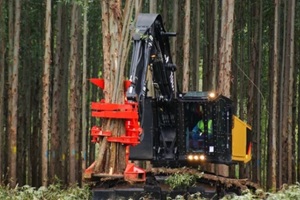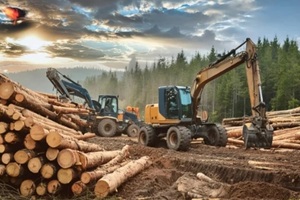
Logging equipment is a primary driver behind a logging company’s ability to complete its jobs on time and on budget. Without this valuable machinery, continuing work is not feasible or even entirely impossible. Thus, it is wise for logging companies to protect their equipment with thorough logging insurance coverage. However, logging equipment needs more protection than security on the job site.
While many accidents happen when logging equipment is performing its intended tasks, this is not the only time this valuable machinery is vulnerable. During transport, logging tools can quickly fall prey to various risks, from vehicle accidents to vandalism. Be sure any insurance policy you consider includes protection during shipping and at the job site.
The Risks Logging Equipment Can Face
Before companies can determine what type of insurance they need for their equipment, it is essential to get a complete picture of the equipment’s perils, not just on the job but on the way to and from the job location. For logging equipment, the most common risks include:
- Poorly kept roads – Loggers often work in remote areas, which may be especially vulnerable to lackluster road maintenance and hazards such as fallen rocks, ice, or snow.
- Poor weather conditions – Logging requires equipment to withstand sometimes intense weather patterns, including hail, snow, ice, heavy winds, and wildfires. If these events occur during transport, machinery is particularly at risk.
- Mechanical failure of transport – If logging equipment needs to be hauled to the job site, the risk lies with the equipment and its transport machinery. The vehicle carrying this expensive cargo may experience failure, such as a tipped or detached trailer, that leaves the logging equipment vulnerable to damage.
- Vehicle accidents – If the logging machinery is involved in a vehicle accident (usually while being hauled), the truck transporting it and the logging equipment itself can suffer severe damage that may render the items unusable.
- Theft and vandalism – Logging equipment may be massive, but that does not stop it from being stolen. Similarly, due to its size, it is a prime target for vandalism, as its often bright colors and large, flat surfaces are conducive to showing off these designs.
How to Protect Logging Equipment
Because logging equipment faces so many risks during shipment and is so expensive to repair or replace, all logging companies would be wise to invest in insurance coverage that leaves nothing to chance. However, protection might not come from a single policy; instead, consider a blend of coverages that can make sure no gaps threaten the protection of these valuable machines.

- Inland marine insurance – A type of insurance policy covering equipment while it is transported via roadways or trains. (If the equipment must move over water, it also needs marine insurance.)
- General liability insurance – A smart coverage for any logging company, general liability protects the company from lawsuits and fees associated with compensating third parties for damage or harm (e.g., if the logging equipment causes an accident while en route).
- Equipment insurance – Because logging machines may be considered equipment, they can often be protected under the scope of equipment insurance. However, always double-check the policy, as basic coverage may include protection limits based on equipment value or weight.
- Umbrella coverage – Some pieces of logging equipment are especially valuable. Baseline insurance policies may not be equipped with the coverage to fully compensate for their value should something happen. Umbrella coverage can increase this limit to make sure a logging company has the protection it needs if another policy falls short.
- Commercial auto – Depending on how the logging equipment is transported, it may benefit from commercial auto insurance. This helps to secure the company against financial consequences should vehicles be involved in an accident while the logging machines are on their way to or from the job site.
Don’t Hesitate to Ship With Strong Insurance Protection
Getting logging equipment to its intended destination and back again is a risky prospect often overlooked in favor of insuring the machinery only while actively logging. By purchasing insurance policies that cover equipment at multiple stages of its work process, logging companies can more adequately protect their investment and keep their projects on the intended timeline.
However, proper preparation is the first step in successfully mitigating risks to logging equipment. Be sure your logging company invests in training employees on how to transport equipment safely and hires transport providers who offer high-quality services. Then, purchase insurance coverage that addresses all the risks that logging equipment might face on its trip. Contact Burton & Company today to learn more about how coverages can be combined for the best results.

